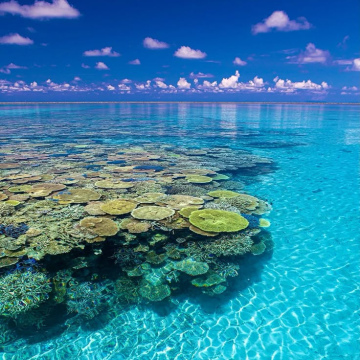Introduction to Japan’s Natural Landscapes
Japan, an archipelago nestled in East Asia, boasts a remarkably diverse geography characterized by stunning mountains, tranquil lakes, dense forests, and picturesque coastlines. The nation's topography is predominantly mountainous, with notable ranges such as the Japanese Alps and the famous Mount Fuji, which stands as a symbol of Japan's natural beauty. These towering peaks not only provide breathtaking views but also play a vital role in regulating the climate and hydrology of the region, influencing the ecosystems that thrive below.
Moreover, Japan is home to numerous lakes, with Lake Biwa being the largest, offering unique habitats for both aquatic and terrestrial wildlife. The country’s extensive forests, which cover approximately 67% of its land area, consist of an array of flora and fauna, making Japan a hotspot for biodiversity. The rich variety of ecosystems found in these forests supports countless species, many of which are endemic to the region. Coastal areas, too, contribute to the geographical tapestry, featuring beautiful shorelines and diverse marine life, further enhancing the allure of Japan's natural landscapes.
National parks in Japan serve as critical sanctuaries for these landscapes, established to protect the country's unique environments while providing recreational opportunities for residents and visitors alike. The significance of national parks extends beyond mere preservation; they are instrumental in conserving biodiversity and maintaining ecological balance. By safeguarding these natural landscapes, Japan not only ensures the survival of various species but also promotes environmental education and awareness among the public, further strengthening the connection between nature and culture.
This overview serves as a prelude to a deeper examination of Japan's national parks and natural wonders, which embody the quintessential spirit of the nation’s rich cultural heritage intertwined with its environmental treasures.
Top National Parks to Visit in Japan
Japan is renowned for its picturesque landscapes and exquisite natural beauty, which can be experienced in its numerous national parks. Among these, Nikko National Park stands out due to its rich cultural heritage and breathtaking scenery. Located in Tochigi Prefecture, this park is famed for its UNESCO World Heritage Sites, including the ornate Toshogu Shrine. Visitors can explore a variety of hiking trails, with popular routes leading to Kegon Falls and Lake Chuzenji. The ideal time to visit is during autumn when the foliage transforms into a vibrant tapestry of colors.
Another must-visit location is Fuji-Hakone-Izu National Park, home to Japan’s iconic Mount Fuji. This park offers diverse attractions, including hot springs in Hakone and stunning ocean views from Izu Peninsula. Outdoor enthusiasts can enjoy numerous hiking opportunities around the mountain, with the Yoshida Trail being a popular ascent route. Travelers are advised to visit during the climbing season, typically from early July to early September, to experience the majestic views from the peak as well as the surrounding natural beauty.
Lastly, Shiretoko National Park, a UNESCO World Heritage Site located in Hokkaido, is known for its pristine wilderness and diverse flora and fauna. This park features rugged coastlines, lush forests, and abundant wildlife, including brown bears and deer. Shiretoko offers numerous activities such as whale watching and hiking, with the Furepe Cliffs offering a spectacular vantage point of the sea. The best time for exploration is during summer when wildlife activity is high and paths are accessible, allowing visitors to immerse themselves in this exceptional environment.
Natural Wonders Beyond National Parks
Japan is renowned for its breathtaking landscapes and rich natural beauty, extending beyond the confines of national parks. Among these remarkable sites, Mount Fuji stands as an iconic symbol of Japan, towering at 3,776 meters. Recognized as a UNESCO World Heritage Site in 2013, this dormant stratovolcano captivates visitors with its symmetrical cone shape and cultural significance. It draws countless hikers and photographers each year, especially during the climbing season from early July to early September, where individuals seek to witness the stunning sunrise from its summit.
Another remarkable feature of Japan's natural scenery is the Japanese Alps, which encompass a picturesque range of mountains in the central part of Honshu. Comprising the Northern, Central, and Southern Alps, this region is a haven for outdoor enthusiasts. Visitors can explore lush hiking trails, ski in winter, or admire the stunning panoramas from various viewpoints. The Japanese Alps are not only about scenic beauty; they also hold significant cultural weight, with several shrines and historical sites nestled within, offering a glimpse into Japan's spiritual heritage.
Shifting from mountains to coastlines, the unique formations of Okinawa present another aspect of Japan's natural allure. The region boasts crystal-clear waters, vibrant coral reefs, and pristine beaches that attract visitors seeking both relaxation and adventure. The breathtaking landscapes and diverse marine life make it a prime location for snorkeling and diving. Furthermore, the coastal formations, such as the famous Cape Manzamo with its iconic limestone cliffs, add to the enchanting views of the island, reinforcing Okinawa's reputation as a tropical paradise.
Lastly, the mesmerizing cherry blossoms, or sakura, bloom throughout spring, attracting millions of visitors who flock to parks and gardens to witness this fleeting yet spectacular display of nature. These delicate pink flowers are emblematic of Japan's appreciation for beauty and transience, leading to traditional hanami (flower viewing) gatherings where people celebrate the arrival of spring with family and friends.
Sustainable Tourism and Conservation Efforts
In recent years, Japan has recognized the importance of sustainable tourism as a means to protect its national parks and natural wonders. As visitors flock to these breathtaking locations, the potential for environmental degradation grows. Consequently, various initiatives and programs have been developed to reduce the ecological footprint of tourism while educating travelers about responsible behaviors. These practices not only help preserve the delicate ecosystems present in Japan's national parks but also promote a deeper appreciation for nature among visitors.
One pivotal aspect of sustainable tourism in Japan involves the implementation of strict guidelines and codes of conduct for travelers. Tour operators and park authorities guide visitors in following responsible practices such as minimizing waste, refraining from picking plants or disturbing wildlife, and respecting local traditions. These measures are crucial in maintaining the integrity of ecosystems and allowing wildlife to thrive. Furthermore, educational programs aim to raise awareness about the importance of these habitats and the challenges they face as a result of climate change and human intervention.
Local communities and organizations play a significant role in fostering sustainable practices. Many of these groups are involved in conservation efforts that help protect endangered species and restore natural habitats. By partnering with national parks, they contribute invaluable knowledge and expertise, ensuring that tourism development aligns with ecological preservation. Volunteering opportunities also allow tourists to actively participate in conservation projects, creating a meaningful connection with the land and its inhabitants.
In essence, sustainable tourism in Japan's national parks encompasses both the preservation of natural wonders and the empowerment of local communities. By promoting responsible visitor behavior and engaging in conservation efforts, Japan aims to protect its unique ecosystems for the enjoyment of future generations, highlighting the importance of coexistence between tourism and nature.








